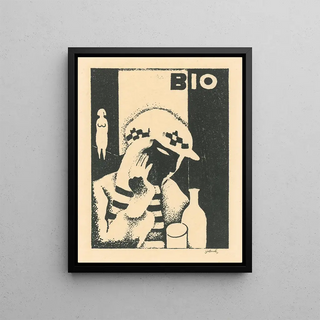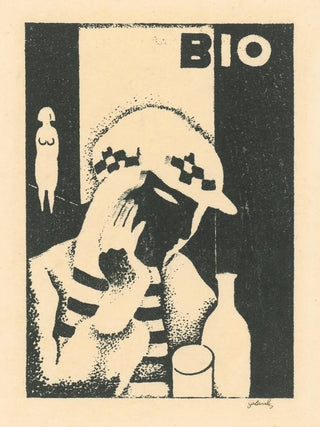Art print | Il était - Mikuláš Galanda


View from behind

Frame (optional)
Mikuláš Galanda's artwork "Il était" immerses us in a universe where dreams and reality intersect. This piece, both mysterious and evocative, invites viewers to an intimate exploration of human emotions. Through vibrant colors and suggestive forms, Galanda succeeds in capturing a fleeting moment, an ephemeral thought, that resonates with each of us. By playing with nuances and light, the artist offers a poetic vision of the human condition, encouraging reflection on our own existence. Contemplating this work, one feels a deep connection with the feelings it evokes, as if the artist had tapped into the human soul to extract its essence.
Style and uniqueness of the artwork
Mikuláš Galanda's style is distinguished by its bold approach and ability to blend abstraction and figuration. In "Il était," the artist uses flowing shapes and shimmering colors that seem to dance across the canvas, creating an atmosphere that is both dreamlike and tangible. The pictorial elements blend harmoniously, forming a coherent whole that captures the eye and stimulates the imagination. This art print is not just a visual representation; it is an invitation to feel, to experience an emotional journey. The balance between light and shadow, as well as the richness of textures, testify to undeniable technical mastery, while leaving room for personal interpretation. Each glance at the art print reveals a new facet, a new emotion, making contemplation infinite.
The artist and his influence
Mikuláš Galanda, an emblematic figure of Slovak art, has established himself through his originality and unique vision. Born into a rich artistic context, he was influenced by modern movements while developing a style that is entirely his own. His work, often introspective, explores universal themes such as solitude, memory, and identity. Galanda has broken free from the conventions of his time, offering a new perspective that continues to inspire contemporary artists. His ability to transcend the boundaries of figurative and abstract art places him among the great masters

Matte finish

View from behind

Frame (optional)
Mikuláš Galanda's artwork "Il était" immerses us in a universe where dreams and reality intersect. This piece, both mysterious and evocative, invites viewers to an intimate exploration of human emotions. Through vibrant colors and suggestive forms, Galanda succeeds in capturing a fleeting moment, an ephemeral thought, that resonates with each of us. By playing with nuances and light, the artist offers a poetic vision of the human condition, encouraging reflection on our own existence. Contemplating this work, one feels a deep connection with the feelings it evokes, as if the artist had tapped into the human soul to extract its essence.
Style and uniqueness of the artwork
Mikuláš Galanda's style is distinguished by its bold approach and ability to blend abstraction and figuration. In "Il était," the artist uses flowing shapes and shimmering colors that seem to dance across the canvas, creating an atmosphere that is both dreamlike and tangible. The pictorial elements blend harmoniously, forming a coherent whole that captures the eye and stimulates the imagination. This art print is not just a visual representation; it is an invitation to feel, to experience an emotional journey. The balance between light and shadow, as well as the richness of textures, testify to undeniable technical mastery, while leaving room for personal interpretation. Each glance at the art print reveals a new facet, a new emotion, making contemplation infinite.
The artist and his influence
Mikuláš Galanda, an emblematic figure of Slovak art, has established himself through his originality and unique vision. Born into a rich artistic context, he was influenced by modern movements while developing a style that is entirely his own. His work, often introspective, explores universal themes such as solitude, memory, and identity. Galanda has broken free from the conventions of his time, offering a new perspective that continues to inspire contemporary artists. His ability to transcend the boundaries of figurative and abstract art places him among the great masters






